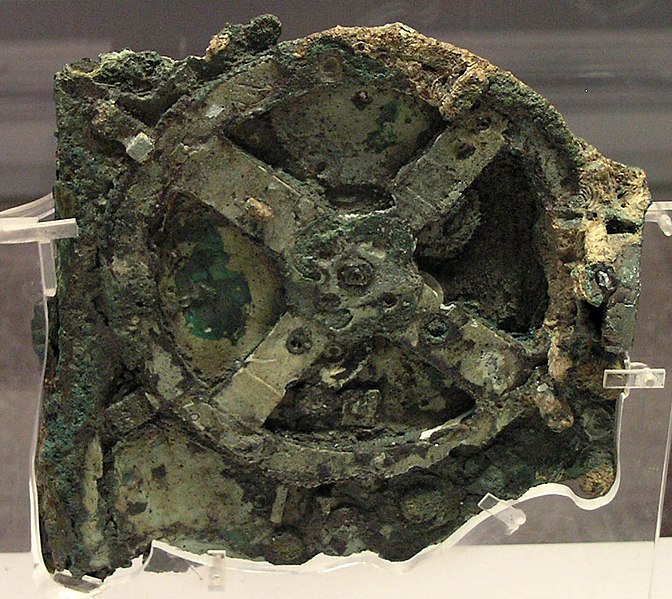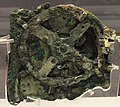Tập tin:NAMA Machine d'Anticythère 1.jpg

Kích thước hình xem trước: 672×599 điểm ảnh. Độ phân giải khác: 269×240 điểm ảnh | 538×480 điểm ảnh | 861×768 điểm ảnh | 1.036×924 điểm ảnh.
Tập tin gốc (1.036×924 điểm ảnh, kích thước tập tin: 207 kB, kiểu MIME: image/jpeg)
Lịch sử tập tin
Nhấn vào ngày/giờ để xem nội dung tập tin tại thời điểm đó.
| Ngày/giờ | Hình xem trước | Kích cỡ | Thành viên | Miêu tả | |
|---|---|---|---|---|---|
| hiện tại | 10:48, ngày 20 tháng 12 năm 2005 |  | 1.036×924 (207 kB) | Marsyas | Fragment principal de la machine d'Anticythère. Le mécanisme consiste en un système complexe de 32 roues et plaques portant des inscriptions relatives aux signes du zodiac et aux mois. L'étude des fragments suggère qu'il s'agissait d'une sorte d'astr |
Trang sử dụng tập tin
Có 10 trang tại Wikipedia tiếng Việt có liên kết đến tập tin (không hiển thị trang ở các dự án khác):
Sử dụng tập tin toàn cục
Những wiki sau đang sử dụng tập tin này:
- Trang sử dụng tại ab.wikipedia.org
- Trang sử dụng tại af.wikipedia.org
- Trang sử dụng tại als.wikipedia.org
- Trang sử dụng tại ang.wikipedia.org
- Trang sử dụng tại anp.wikipedia.org
- Trang sử dụng tại an.wikipedia.org
- Trang sử dụng tại ar.wikipedia.org
- Trang sử dụng tại ast.wikipedia.org
- Trang sử dụng tại azb.wikipedia.org
- Trang sử dụng tại az.wikipedia.org
- Trang sử dụng tại bcl.wikipedia.org
- Trang sử dụng tại be-tarask.wikipedia.org
- Trang sử dụng tại be.wikipedia.org
- Trang sử dụng tại bg.wikipedia.org
- Trang sử dụng tại bn.wikipedia.org
- Trang sử dụng tại bs.wikipedia.org
- Trang sử dụng tại ca.wikipedia.org
- Trang sử dụng tại ce.wikipedia.org
- Trang sử dụng tại cs.wikipedia.org
- Trang sử dụng tại cv.wikipedia.org
Xem thêm các trang toàn cục sử dụng tập tin này.
